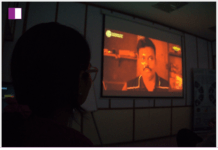In the aftermath of the rechristening of VML, Shivaji Dasgupta, Managing Director, Inexgro Brand Advisory, explores the changing dynamics of the Indian advertising industry and emphasises the imperative to understand its impact on agency clients.
In recent days, senior agency folks are amply lamenting the loss of the JWT and Y&R brands, rechristened as VML. While the sentiments are indeed valid, yet another matter must be suitably explored, with due regard- which is the impact of such staccato consolidation gambits on the customer of the agency, better known as the client.
But first, it is necessary to board a time machine to understand why and how global networks played such a dominant role in the Indian Advertising scenario. The early waves of serious branding initiatives were invariably initiated by origin exponents seeking a footprint in India, whether British or independent. Unilever, BAT and their myriad peers, automotive and otherwise, set the tone for a universal process and philosophy alignment. Later masterfully adapted by Pepsi, Coke, Reckitt, GSK and more recently, the Korean and Japanese rockstars.
The reason, then and now, is the fundamental territory of trust. Legacy Westerners and subsequently, emerging Easterners, were obsessive about continuity, in terms of both people and IP, soft or hard. This meant that locals had to be housetrained, in a manner of engagement arguably comparable to the East India Company. Thus, agencies had to be formulated, as per the FDI norms of the land, through the Greenfield or the acquisition route. The lucre was considerable, as proven by a whole host of sparkling Indian entrepreneurs who sought the comforts of belonging – Ulka, Sistas, Rediffusion, Madison amongst notable others.
A mirror pattern was observed by the original global agencies, most notably HTA, OBM and Lintas. Each time the laws of the land were relaxed, the white-skinned parent diligently absorbed a greater slice of the pie, the hefty share sale booty delighting the hungry locals. Even the brand identities changed, as per international tides, thus JWT, Lowe and Ogilvy became the brand new facades of a rather lengthy association. The trigger happy acumen of bosses to change names was astonishing, perhaps a mental health specialist can identify this self destructive strain, Those in the craft of longevity falling prey to the mirage of here and now.
While all of this was happening, in the corridors of Canary Wharf, Park Avenue or wherever, one more significant occurrence was live. India was emerging as a proud, passionate and successful nation, charting a growth path that did not follow even the most pedigreed template. The Indonesia and Brazil use cases, for very long the secret sauce of global networks, became as useful as toilet paper in this thriving democracy. Thankfully, a whole host of stalwarts came to the party, recognising the need for indigenous creativity, crafted with deeply insightful first person empathy. Templates could also be made to work, as long as they were rerouted in the India Story GPS.
When all of this was happening, the global masters reacted with time tested shrewdness. The enforced continuity to virgin markets, Nehruvian India, quickly transformed to a formidable psycho-demographic growth engine, funding the bonuses of the fat cats in New York and Seoul. As reluctant although well deserved concession to the winds of change, Indians were elevated to global positions, smart retention strategy breaking bread with a genuine necessity to imbibe the rapidly escalating Asian dominance.
In 2023, the India story is more robust than ever before, thanks primarily to our DPI ( Digital Public Infrastructure), The India Tech Stack, in the last ten years, has lead to an internet penetration in excess of 52 %, a banking adoption of close to 85% and a staggering track record in UPI, aided also by Direct Benefit Transfers. Most remarkably, the change has been orchestrated by rural citizens and women, both hitherto outside the ambit of pioneering statistical considerations. By derivative logic, way outside the reckoning of global networks who have thrived on the Post World War !! sameness in growth patterns, the blend of manufacturing efficiencies and patriarchal consumer pull.
As a logical outcome, much of advertising revenues, and let me not bore you with details, emanates from Indian entrepreneurship. Airtel, Paytm, BFSI as large, Dream 11, Tira and the list is indeed endless. Those operating with overseas parentage, have rapidly learnt to generate their original India stories, based ruthlessly on the finesse of relatability. As a survival strategy, not ‘good to do’. The reason is brutally simple – as a demographic entity, the Indian does not conform to any defensible global precedence, we are indeed dynamically unique. Therefore, the way we must be wooed is an ever evolving canopy of intrigues, like a Karan Johar production.
Therefore, the moot point. Clients, large and small, don’t quite care about mergers designed to make others wealthier or more powerful. The only brands they are interested in are their own brands, not those of support services. Most vitally, the only service they expect from partners as such is a demonstrable growth formula – rooted in this modest 1.4 billion demography. Whoever can deliver that, successfully and consistently, is of interest to them – the rest may well rest in the yachts of Cannes. Finally, and deservingly, India is today a High Performance economy – our disdain for English is a supreme indicator of our disenchantment for global symbolism.
Interestingly, I do feel that such mergers like VML, offer unique opportunities for homegrown agencies, led by wise fellows. To reinforce their India First credentials with truthful aplomb, and thus earn the trust and understanding of self same business folks, out on a very similar journey. While global players, with their ears to the surface, must take suitable advantage of the situation, by investing their rigour and skills in understanding and implementing the idea of India.
In the ‘wonder’ years of my professional career, I remember deeply the encounter between a global creative leader with a very large client. The gentleman, in a voluminous tuxedo, chose to present the campaign layouts with manicured gloves, as a bespoke ritual of passage. Clearly, a few in the audience were suitably impressed but that was clearly then and this is surely now.
Where India is the boss in terms of opportunity and the previous bosses are service providers, to ensure fulfilment. To all those besotted with nostalgia on the termination of their past identities, it is time to go get a life. India has moved on and the Advertising industry must take suitable advantage.





































